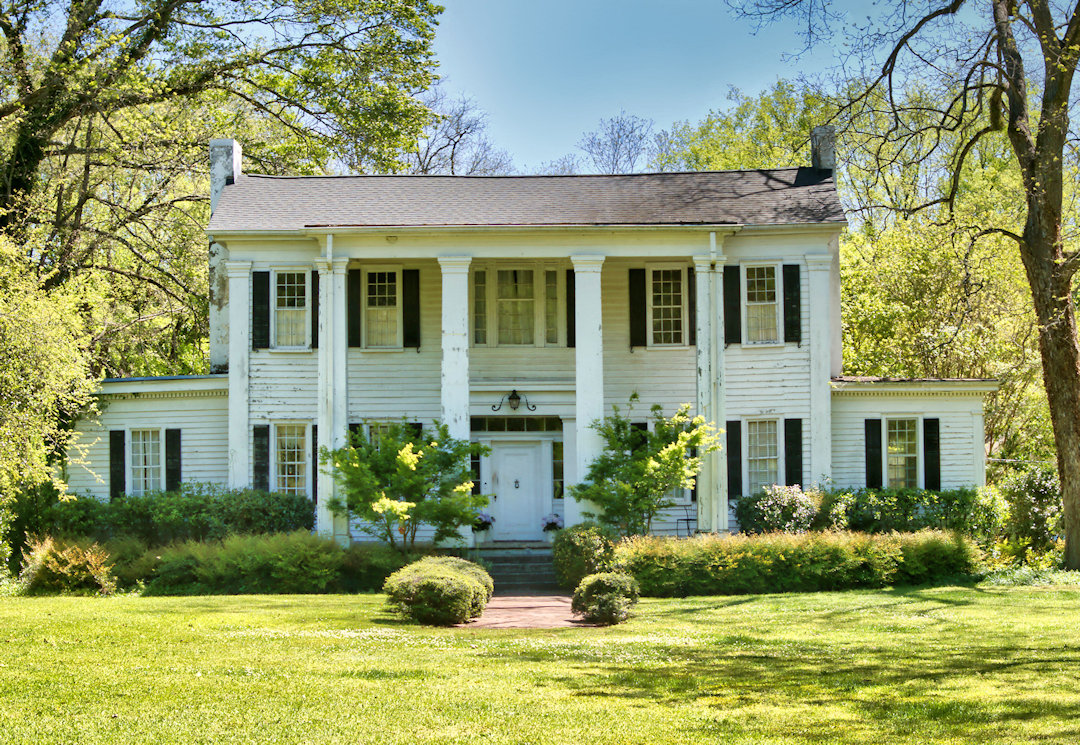
Christened “Orna Villa” in 1820 by Dr. Alexander Means, Jr. (1801-1883), this is the oldest house in Oxford, and if the log house from which it was expanded is considered, likely has origins in the 1790s.
In her highly-readable history of the house, current owner Lisa Dorward has done more research than anyone else, it seems. She writes: A Virginian by the name of Richard Keenon Dearing had come to Georgia in 1793 and purchased 2,000 acres of land on which he built a four-room plantation house of hand-hewn logs. Dr. Means bought the house from Dearing around 1820 and set about expanding and remodeling it into the grand Greek Revival house it is today. Among Dr. Means’s many interests was ornithology, so he named his home that stood among the trees, Orna Villa, meaning “Bird House.”
Alexander Means, Jr., was a renaissance man who, as the Oxford Historical Society notes, served as a physician, school teacher, scientist, college professor, poet, college president, statesman, and as the first state chemist in the United States. Born to an Irish immigrant father and Scots-Irish mother in Statesville, North Carolina, Means settled circa 1820 in what would eventually become the town of Oxford. He married Sarah A. E. Winston in 1827 and they had 11 children. He helped establish the Newton County Female Seminary, served as president of the Georgia Conference Manual Labor School, and taught natural sciences at the newly established Emory College, among other academic endeavors. He entertained President Millard Fillmore at Orna Villa, and delivered the funeral oration for President Zachary Taylor. He was awarded an honorary Doctor of Medicine degree from the Medical College of Georgia, where he taught during winter sessions. He retired from Emory in 1855, after briefly serving as president. Though he traveled and lectured in many locations, he remained at Orna Villa throughout his life.
As accomplished as he was and as varied his interests, Means, was also man of his time Research by Dr. Gary Hauk and Dr. Sally Wolff King suggests that between 20-28 men, women, and children were enslaved at Orna Villa. Ironically perhaps, Dr. Means was initially opposed to secession, but soon became a vocal supporter of the Confederacy.
Orna Villa stands today as one of the most tangible symbols of Oxford and Newton County’s early history. There are quite a few “ghost stories” related to the house, as well, especially those concerning Toby Means, but you’ll have to read Lisa Doward’s articles to learn more about them.
National Register of Historic Places
